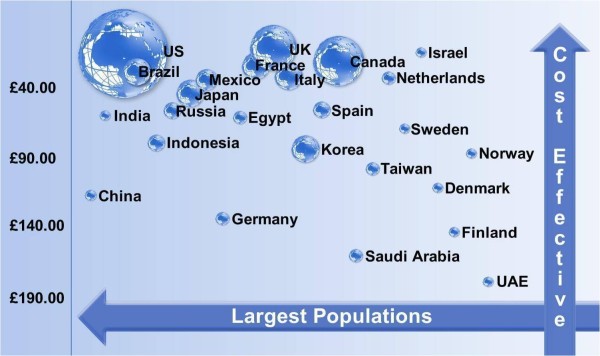Global Site Infrastructure Plan Essential For Effective SEO & Usability
Targeting the world with a website is a huge opportunity for today’s marketers — but very few businesses start out with that goal. The vast majority target a particular nation first, prove the business model, grow their business’ success, and then consider rolling out globally. What this actually means is that most Web projects which […]
Targeting the world with a website is a huge opportunity for today’s marketers — but very few businesses start out with that goal. The vast majority target a particular nation first, prove the business model, grow their business’ success, and then consider rolling out globally.
What this actually means is that most Web projects which target international customers started out as domestic projects which have since been “converted.” These multinational websites were usually conceived and built for a domestic audience, then adapted in some way for new customers speaking different languages, in different parts of the world, with different issues. It’s not difficult to see why many such projects run into trouble.
Plan Infrastructure As Early In The Process As Possible
There are two possible approaches which may help avoid the challenges that “conversion” of a website may cause. One is to plan the site with an international structure before you launch locally. Realistically, there will only be a few of you who take up this suggestion, as there are so many issues to manage upon first launch that they overwhelm any kind of “investment” in the project which is looking a year or two ahead of time.

Analysing Your Strategic Plan Has A Significant Impact On Infrastructure. Source: Webcertain
Mapping your plans — as shown above — so you can identify the most important strategic target markets means you can draw up better SEO and SEM plans!
The second and more likely option is to begin planning your site’s needed structural changes just at the point where the plans are drawn to go global. At this stage, the team and senior management all have high motivation and a vested interest in making this happen!
Unfortunately, most do not formally plan for a revision of the original site’s architecture or consider how the content will be delivered globally — which is the reason for this post. That is to say, I’m not here to criticise, but to raise awareness of the fact that even before you launch into your full-blown international SEO efforts, you should really spend some time drawing up a plan of the necessary changes to your current website infrastructure.
Brainstorming The Plan To Make The Key Strategic Points Visible
So, what questions does a plan like this need to deal with? Here’s a sample list — but remember, it’s best to brainstorm this with your particular organisation’s needs in mind:
- Which countries or regions will be targeted? (The country plus each of its languages is sometimes divided into regions which may be called geos or locales.)
- How many currencies will the website deliver?
- How many languages will be available in total?
- How will language content be updated? XML?
- How many delivery points will be used?
- Will time zones be a factor we need to consider?
- Which regions will be benefiting from customer support?
- When will that customer support be available?
- Will customer support be delivered by phone or email? Or both?
- Can we group countries into priority, secondary and insignificant target markets?
- What specific changes are required to forms to accommodate different regions? Which drop downs and mandatories need to be updated?
- Which phone numbers are linked to which regions?
This might seem like an unusual list, but let me explain how this plays out. When I’m asked that question about whether to use local domains, sub-domains, or folders to globalize a site, my answer these days is almost always that the final result is most likely a hybrid. This is because there are many business strategy factors which need to be included in the consideration of that question.
For instance, the most important target markets — where you plan to attract the greatest business growth — should ideally be at the heart of your infrastructure. This means they should probably have local domains and high-quality translation investments.
The lesser important markets which are grabbing the language content from another region (e.g., Spanish) may use Google’s geographic setting in webmaster tools.
The remaining locations you may well want to block out from search engines using the robots.txt file — they probably don’t warrant having their own search engine presence because of the harm they may do to your mainstream sites. (Note: Users in those “blocked” countries will still be able to navigate to their respective pages. You can safely use IP address sniffing in these locations, as well, if you wish to, as this won’t do any damage to your mainstream sites — however you need to make it conditional on IP addresses coming from non-target countries rather than from those which count!)
Even knowing which currency you will be using and where can have a significant impact on your planning!
The point I am making here is not to try to implement your SEO after you’ve made all the important strategic decisions, but rather to plan your infrastructure right at the outset with SEO advice alongside. Even the most basic of business decisions affect the SEO approach internationally going forward!
Contributing authors are invited to create content for Search Engine Land and are chosen for their expertise and contribution to the search community. Our contributors work under the oversight of the editorial staff and contributions are checked for quality and relevance to our readers. The opinions they express are their own.
Related stories